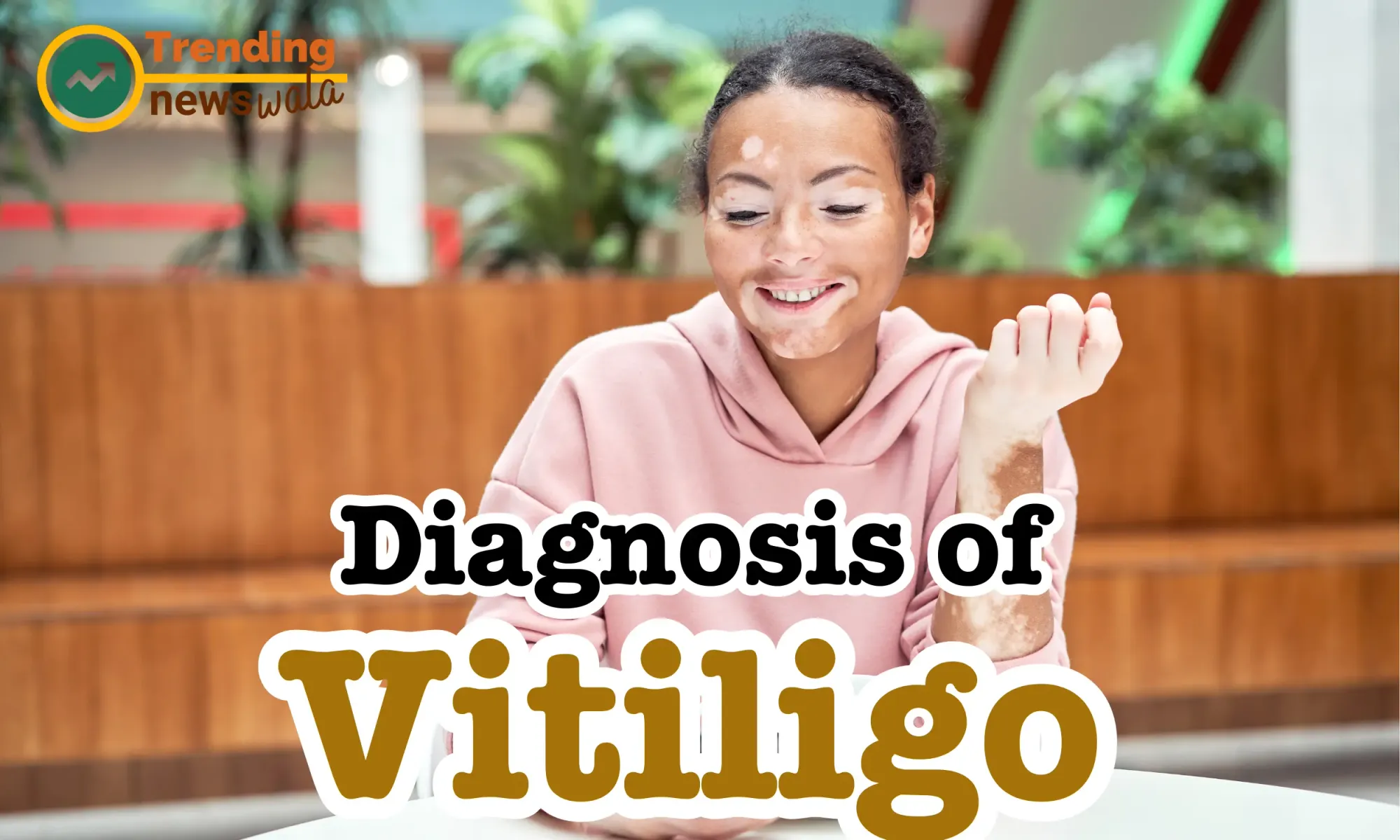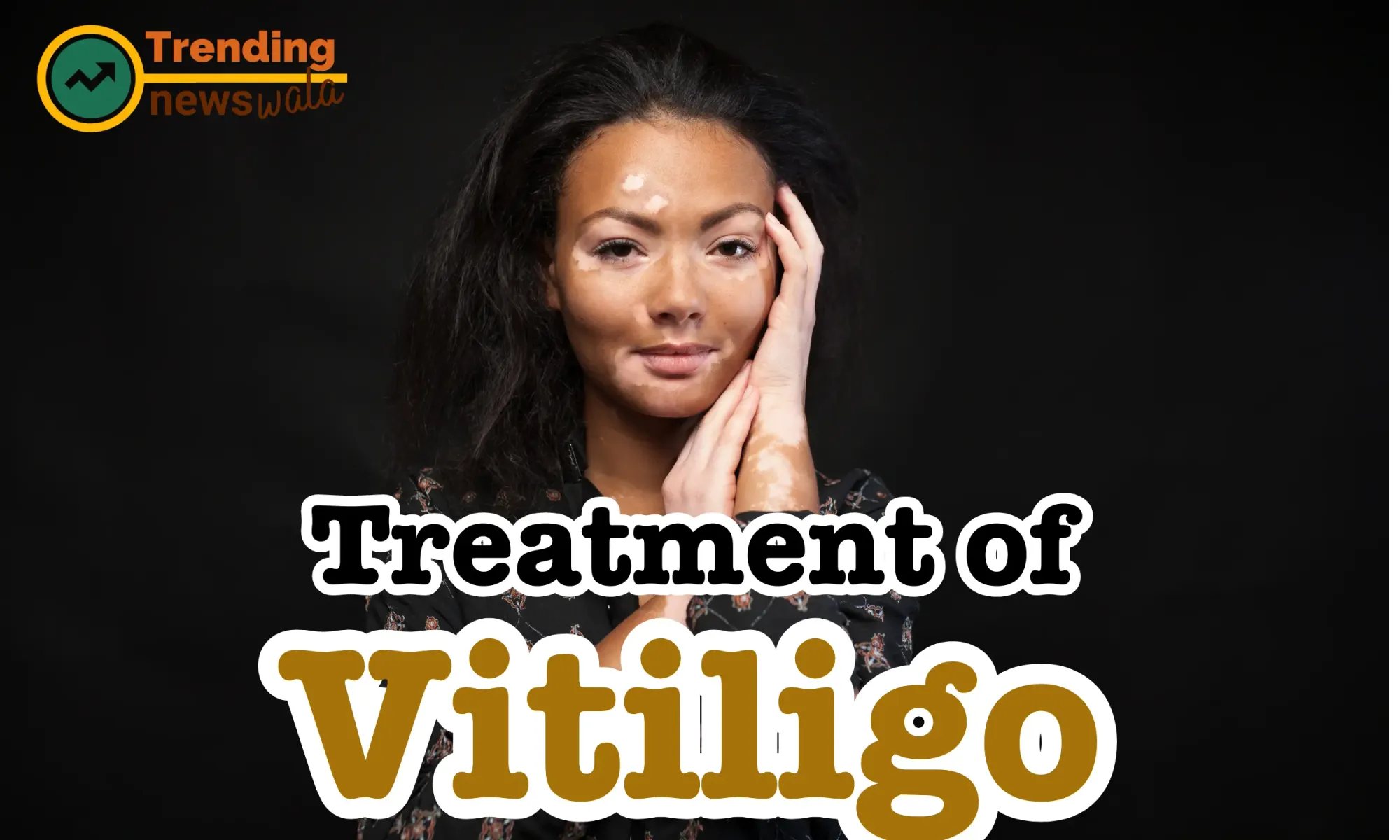Vitiligo Homeopathy Cure

Vitiligo is a skin condition characterized by the loss of pigment, resulting in white patches or depigmented areas on the skin. This occurs when melanocytes, the cells responsible for producing pigment (melanin), are destroyed. The exact cause of vitiligo is not fully understood, but it is believed to involve a combination of genetic, autoimmune, and environmental factors.
Key Characteristics of Vitiligo
- Skin Depigmentation: The primary and most noticeable symptom of vitiligo is the development of white patches on the skin. These patches often have well-defined borders and can occur on any part of the body.
- Symmetrical Patterns: In many cases, vitiligo patches appear symmetrically on both sides of the body. For example, if a patch develops on one elbow, a similar patch may appear on the other elbow.
- Progressive Nature: Vitiligo can be progressive, with new patches developing over time. The rate at which it progresses varies from person to person.
- Involvement of Mucous Membranes: In some cases, vitiligo may also affect mucous membranes, such as the lips and the tissue lining the inside of the mouth and nose.
- Premature Graying of Hair: People with vitiligo may experience premature graying of the hair on the scalp, eyebrows, eyelashes, or beard.
Potential Causes and Risk Factors

The exact cause of vitiligo is not fully understood, and it likely involves a combination of genetic, autoimmune, and environmental factors. Here are some potential causes and factors associated with the development of vitiligo:
Autoimmune Factors:
- Autoimmune Destruction: One prevailing theory suggests that vitiligo is an autoimmune disorder where the immune system mistakenly attacks and destroys melanocytes, the cells responsible for producing pigment (melanin). This leads to the depigmentation characteristic of vitiligo.
Genetic Factors:
- Family History: There is evidence to suggest a genetic predisposition to vitiligo. Individuals with a family history of vitiligo may have an increased risk of developing the condition.
- Genetic Markers: Certain genes are associated with an increased susceptibility to vitiligo. Variations in these genes may contribute to the risk of developing the disorder.
Neurogenic Factors:
- Neural Mechanisms: Some studies propose that neural factors may play a role in the development of vitiligo. Trauma or stress to the skin, including nerve endings, could trigger changes in melanocytes.
Environmental Triggers:
- Chemical Exposure: Exposure to certain chemicals may be a potential environmental trigger for vitiligo. However, the specific chemicals and their role in the development of the condition are not fully understood.
- Sunburn and Trauma: Severe sunburn or physical trauma to the skin may trigger the onset of vitiligo, especially in genetically predisposed individuals.
Immunological Factors:
- Altered Immune Response: Changes in the immune response, particularly alterations in the function of T lymphocytes (a type of white blood cell), may contribute to the destruction of melanocytes in vitiligo.
- Cytokines: Imbalances in cytokines (proteins involved in cell signaling) may contribute to the autoimmune response seen in vitiligo.
Viral and Bacterial Infections:
- Viral Infections: Some researchers have explored the role of viral infections, suggesting that certain viruses may trigger an immune response leading to the destruction of melanocytes.
- Bacterial Infections: Infections caused by bacteria, particularly those affecting the skin, have been proposed as potential triggers for vitiligo in some cases.
It's important to note that while these factors are associated with vitiligo, the precise interplay and mechanisms leading to the development of the condition are complex and not fully elucidated. Additionally, vitiligo is not contagious.
If someone notices depigmented patches on their skin or has concerns about vitiligo, it's crucial to consult with a dermatologist. A healthcare professional can provide an accurate diagnosis, evaluate the extent of the condition, and discuss appropriate treatment options based on individual circumstances.
Diagnosis of Vitiligo

The diagnosis of vitiligo is primarily based on a thorough examination of the skin by a dermatologist. The process typically involves a combination of medical history review, physical examination, and sometimes additional tests. Here are the key steps in the diagnosis of vitiligo:
Medical History:
- The dermatologist will begin by taking a detailed medical history. They may ask questions about the patient's overall health, family history of vitiligo or other autoimmune conditions, and any triggers or events that may have preceded the onset of vitiligo.
Physical Examination:
- A thorough examination of the skin is essential. The dermatologist will look for characteristic depigmented patches with well-defined borders. The examination may involve checking the entire body, including areas not immediately visible.
Wood's Lamp Examination:
- A Wood's lamp, which emits ultraviolet (UV) light, may be used to examine the skin more closely. This can help the dermatologist assess the extent and characteristics of depigmented areas, especially in cases where they may not be immediately visible to the naked eye.
Skin Biopsy:
- In some cases, a skin biopsy may be performed to confirm the diagnosis. During a biopsy, a small sample of affected skin is removed and examined under a microscope. This can help rule out other skin conditions and confirm the absence of melanocytes in the depigmented areas.
Blood Tests:
- Blood tests may be ordered to assess the patient's overall health and check for underlying autoimmune conditions. While not specific to vitiligo, blood tests can provide additional information about the patient's immune system.
Photographic Documentation:
- In some cases, the dermatologist may take photographs of the affected areas. This serves both as a record of the current condition and as a reference point for monitoring changes over time.
Differential Diagnosis:
- The dermatologist will consider other skin conditions with similar symptoms during the diagnostic process. Conditions such as pityriasis alba, tinea versicolor, and post-inflammatory hypopigmentation may resemble vitiligo but have different underlying causes.
It's important for individuals who notice depigmented patches on their skin to seek prompt medical attention. Early diagnosis allows for timely intervention and management of the condition. Additionally, a dermatologist can provide information about treatment options, address concerns, and offer support for the emotional aspects of living with vitiligo.
Treatment of Vitiligo

The treatment of vitiligo aims to restore color to the depigmented areas of the skin. However, there is no cure for vitiligo, and treatment outcomes can vary from person to person. The choice of treatment depends on factors such as the extent of the condition, the location of depigmented patches, and the individual's preferences. It's essential to consult with a dermatologist to determine the most suitable approach for each case. Here are some common treatments for vitiligo:
Topical Corticosteroids:
- Corticosteroid creams or ointments are often prescribed to reduce inflammation and repigment the skin. These are most effective for small, localized areas of vitiligo.
Topical Calcineurin Inhibitors:
- Tacrolimus and pimecrolimus are topical immunomodulators that can be used on the face and other sensitive areas. They may be recommended for individuals with vitiligo in these regions.
Phototherapy (Light Therapy):
- Phototherapy involves exposing the skin to ultraviolet A (UVA) or UVB light. This can be done in a clinic or at home under the guidance of a healthcare professional. Phototherapy is often effective for widespread vitiligo.
Excimer Laser:
- This laser emits a concentrated beam of UVB light, targeting specific areas of depigmentation. It is particularly useful for localized vitiligo and has shown positive results in repigmenting the skin.
Pigment Transplantation (Autologous Melanocyte Transplantation):
- In this procedure, melanocytes are harvested from a patient's healthy skin and transplanted into depigmented areas. This can be done through various techniques, including suction blister grafting and cultured melanocyte transplantation.
Micropigmentation (Tattooing):
- Micropigmentation involves the application of tattooed pigment to the depigmented areas, matching the surrounding skin color. This can be a cosmetic solution for those who do not respond well to other treatments.
Topical Psoralen Plus Ultraviolet A (PUVA):
- Psoralen, a light-sensitizing medication, is applied topically or taken orally before exposure to UVA light. This combination therapy stimulates repigmentation in some cases.
Depigmentation:
- In cases where vitiligo affects most of the body, depigmentation may be an option. This involves using topical agents to lighten the remaining pigmented skin, creating a more uniform appearance.
It's important to note that not all treatments are suitable for every individual, and the effectiveness of treatments can vary. Additionally, some treatments may carry potential risks and side effects, so consultation with a healthcare professional is crucial to determine the most appropriate course of action based on the individual's specific case and medical history. Management of vitiligo may also include psychological support and counseling, as living with a visible skin condition can impact a person's emotional well-being.

Frequently Asked Questions (FAQs) about Vitiligo:
What is vitiligo?
Vitiligo is a skin condition characterized by the loss of pigment, resulting in white patches on the skin. It occurs when melanocytes, the cells responsible for producing pigment (melanin), are destroyed.
Is vitiligo a rare condition?
Vitiligo is not rare, and it can affect people of all ethnicities and age groups. It is estimated to affect approximately 1% of the world's population.
What causes vitiligo?
The exact cause of vitiligo is not fully understood, but it is believed to involve a combination of genetic, autoimmune, and environmental factors. Autoimmune factors, in which the immune system attacks melanocytes, are thought to play a significant role.
Is vitiligo contagious?
No, vitiligo is not contagious. It is not caused by an infection or by coming into contact with someone who has the condition.
Can vitiligo be prevented?
There is currently no known way to prevent vitiligo. Since the exact cause is not fully understood, preventing the condition is challenging.
How is vitiligo diagnosed?
Vitiligo is typically diagnosed through a physical examination by a dermatologist. In some cases, a skin biopsy or blood tests may be performed to confirm the diagnosis and rule out other conditions.
What are the treatment options for vitiligo?
Treatment options for vitiligo include topical corticosteroids, topical calcineurin inhibitors, phototherapy (light therapy), excimer laser, pigment transplantation, micropigmentation (tattooing), and depigmentation, among others. The choice of treatment depends on the extent and location of depigmented patches.
Is there a cure for vitiligo?
Currently, there is no cure for vitiligo. However, various treatments aim to repigment the skin or even out skin tone. The effectiveness of treatments varies among individuals.
Can vitiligo spread to other parts of the body?
Vitiligo can spread to other areas of the body over time. The rate and extent of spread vary among individuals. In some cases, the condition may remain stable without further progression.
Does vitiligo cause any health problems?
Vitiligo itself is not a harmful or painful condition, and it does not cause physical health problems. However, the psychological impact of visible depigmentation may affect a person's emotional well-being.
Can vitiligo be treated with natural remedies or homeopathy?
While some people explore natural remedies and homeopathy for vitiligo, the effectiveness of such treatments is not scientifically proven. It's essential to consult with a dermatologist before trying any alternative treatments to ensure a safe and informed approach.
Is there support available for individuals with vitiligo?
Yes, support groups, online communities, and counseling services are available to help individuals cope with the emotional aspects of living with vitiligo. Connecting with others who share similar experiences can provide valuable support.
It's crucial for individuals with vitiligo to consult with a dermatologist for an accurate diagnosis and to discuss appropriate treatment options based on their specific case.





